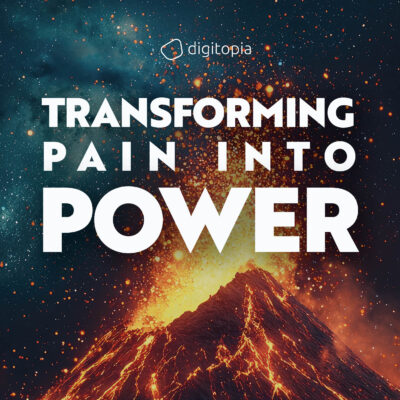
In every organization, the weight of tradition and the pull of the past can create an almost gravitational force that resists change. This is corporate inertia—a powerful force that keeps businesses locked into outdated practices, slow decision-making, and an aversion to innovation. For executives, this inertia is not just an operational challenge; it’s a source of deep frustration, creating a cycle of struggle that can feel impossible to break. But recognizing this inertia is the first step toward overcoming it, and there is a path forward that can lead both the business and its leaders to greater success.
Understanding Corporate Inertia
Corporate inertia refers to an organization’s tendency to stick with established routines, processes, and strategies, even when they are no longer effective. It’s a common problem, particularly in long-standing companies that have enjoyed success in the past. The belief that “what worked before will work again” can be deeply ingrained, leading to a reluctance to adopt new methods or technologies. This resistance to change can be subtle, manifesting as slow decision-making, endless rounds of meetings, or a lack of urgency in pursuing new opportunities.
At its core, inertia is about comfort—an organization becomes comfortable with its current state, and change represents a threat to that comfort. This fear of the unknown can lead to stagnation, where the organization misses out on new opportunities and gradually falls behind more agile competitors.
Case Study: The Stalled Innovator
Imagine a mid-sized manufacturing company, “InnovoTech,” that once led its industry with groundbreaking products. Over the years, InnovoTech has become complacent, relying on its past successes to carry it forward. The company’s leadership team is aware of emerging trends and technologies that could revolutionize their industry, but every time a new initiative is proposed, it’s met with hesitation. “We’ve been doing it this way for decades,” is the common refrain, and the leadership team struggles to gain buy-in for anything that disrupts the status quo.
As a result, InnovoTech has seen its market share slowly erode, with more innovative competitors capturing the attention of customers. The company’s once-proud reputation as an industry leader is now overshadowed by a growing perception that it’s stuck in the past. This is corporate inertia in action—a once-dynamic organization now paralyzed by its own history.
The Executive’s Frustration
For executives, corporate inertia is more than a challenge; it’s a source of deep frustration. Their role is to drive progress and innovation, but when an organization resists change, achieving these goals feels impossible. This constant battle drains energy and enthusiasm, leading to burnout and a sense of powerlessness.
Case Study: The Frustrated Visionary
Consider Sarah, the Chief Operating Officer of a traditional retail company. Sarah joined the company with a clear vision to modernize operations and embrace e-commerce to combat declining in-store sales. She developed a comprehensive digital transformation strategy, complete with a detailed roadmap for implementation. However, every step of the way, she encountered resistance—from middle management who feared job losses due to automation, to board members who were wary of the initial investment required.
Meetings dragged on without resolution, and months passed with little progress. Sarah’s initial excitement and drive began to wane, replaced by frustration and a growing sense of futility. She felt trapped in a cycle where every attempt to move the company forward was met with inertia, leaving her feeling powerless to effect real change.
Breaking the Cycle: The Power of Early Detection
The key to overcoming corporate inertia and reducing executive frustration lies in early detection—spotting signs of resistance before they become entrenched. This involves understanding and addressing the fears behind the resistance, fostering a culture of open communication where employees feel comfortable sharing concerns and ideas, and making change a collaborative effort.
Case Study: The Turnaround at InnovoTech
At InnovoTech, the CEO recognizes early signs of inertia and takes a proactive approach by organizing town hall meetings to openly discuss concerns and ideas. By addressing fears and highlighting the risks of staying stagnant, she builds trust and gains support for new initiatives. The CEO identifies key influencers within the company to champion these changes, gradually shifting the culture from resistance to innovation. As a result, InnovoTech begins to embrace necessary changes, reinvigorating the leadership team and replacing frustration with renewed purpose.
Moving Forward with Confidence
Overcoming corporate inertia is challenging but essential for long-term success. For executives, the frustration of battling inertia can be overwhelming, but it’s not insurmountable. By focusing on early detection and fostering open communication, leaders can break down barriers and drive progress. It requires patience, persistence, and a willingness to challenge the status quo, but the rewards are worth it—a more dynamic, innovative organization where leaders can lead confidently. Remember, frustration isn’t a sign of failure; it’s a signal for needed change, transforming challenges into growth opportunities.
Download Your Copy Today!
For more insights on overcoming challenges like corporate inertia and driving meaningful change, explore the Transforming Pain into Power Ebook. This chapter is just one part of a comprehensive guide that delves into the most pressing issues facing business leaders today, offering actionable strategies to turn obstacles into opportunities for growth and success. Discover the full range of chapters and empower yourself with the tools to transform frustration into fuel for progress.
Get your copy of the Transforming Pain into Power Ebook now and start your journey toward a more dynamic future!


